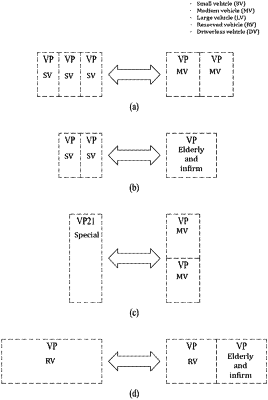| CPC G06Q 10/02 (2013.01) [G06Q 50/30 (2013.01); G07B 15/02 (2013.01); G08G 1/146 (2013.01)] | 14 Claims |

|
1. A method of communicating with a network by a vehicle in a wireless communication system, the method comprising:
performing physical downlink control channel monitoring;
receiving a physical downlink shared channel from the network based on detecting a physical downlink control channel carrying a downlink control information (DCI) format that schedules the physical downlink shared channel;
receiving a first message related to a parking lot from the physical downlink shared channel;
transmitting a second message requesting a reservation for a specific parking space among one or more parking spaces in the parking lot to the network; and
receiving a third message including spatial coordinates of the specific parking space; and
displaying virtual parking lines on a screen in the vehicle, wherein the virtual parking lines indicate the spatial coordinates,
wherein the second message for the reservation includes type information on the vehicle,
wherein the spatial coordinates of the specific parking space are dynamically determined based on the type information on the vehicle and type information on the one or more parking spaces, and
wherein transmitting the second message comprises:
generating the second message;
encoding the second message to obtain a coded bit sequence;
obtaining complex-valued symbols based on the coded bit sequence;
mapping the complex-valued symbols to physical resources of a physical uplink shared channel;
performing an orthogonal frequency division multiplexing (OFDM) modulation on the physical uplink shared channel to OFDM baseband signal;
upconverting the OFDM baseband signal to a carrier frequency to an OFDM signal of the carrier frequency; and
transmitting the OFDM signal of the carrier frequency.
|